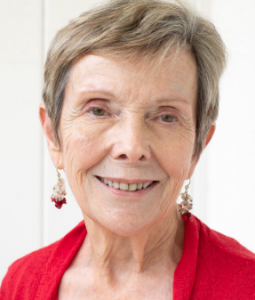Once it receives the much-anticipated 2020 Census data, the Kentucky General Assembly will begin redrawing boundaries for its own districts, as well as those for the Commonwealth’s six seats in the U.S. House.
Those maps will have a big influence on Kentucky elections for the next 10 years.
This redistricting process ought to be conducted openly. Legislators should also invite contributions from competent third parties – including academics, public interest groups and individuals.

Fran Wagner
Doesn’t sound like too much to ask, does it?
Well, given past practice in Frankfort, this would be a major change. The last time around, the General Assembly drew its maps behind closed doors, held no public hearings and promptly brought them up for votes – and then had to do it all over again because of litigation stemming from allegations of excessive gerrymandering.
In a more perfect world, I submit, the General Assembly would not have sole control over drawing its own boundaries. The League of Women Voters of Kentucky has proposed that Kentucky establish a 15-member citizens’ Advisory Redistricting Commission to conduct public hearings across the state and make recommendations to the General Assembly. (House Bill 23) According to Ballotpedia, at least 16 states already use such commissions in one way or another.
If, however, Kentucky lawmakers decide to again draw their own maps, the least they can do is be open about it as proposed in House Concurrent Resolution (HCR) 61.
The federal and state constitutions and a legacy of court rulings do impose certain constraints on the redistricting process. Chief among them:
• Districts must be as nearly equal in population size as possible.
• Districts may not intentionally dilute the voting power of racial minorities (by splitting voters into separate districts, for example, or packing them into one).
• Districts for the Kentucky legislature must divide the smallest possible number of counties.
The first of these, population equality, is the most important, if only because there’s so little room to fudge.
At present, Kentucky has six seats in Congress (averaging population about 738,000), along with 38 State Senate and 100 State House districts. We won’t know for sure until the 2020 Census data is released (the date has been pushed back to late September), but it appears Kentucky will keep all of its seats in the U.S. House. But already there are indications that the past decade has seen significant population shifts within the Commonwealth — notably growth along the interstate corridors and losses in the eastern and western areas.
It is in the making of adjustments for such population shifts that the subjectivity of redistricting comes in. And it is here that public input, and an open map-making process, becomes crucial.
The bald truth is that redistricting historically has been, first and foremost, an incumbent protection procedure. It has also been a tool for giving partisan advantage.
It’s fair to argue that this is all just part of a longstanding political process. But there are larger interests at stake.
The biggest, I think, is the effect of gerrymandered “safe” districts on our politics. Across the country, at a time when fewer voters identify with either major party, general elections in many districts are a foregone conclusion because of the way the boundaries are drawn. The real decisions are made in primaries. And those primaries, because they attract the most partisan voters, have tended to reward candidates running on the extremes of left or right. No wonder our rhetoric has gotten so heated and our moderates so endangered.
Another overarching issue in redistricting is the importance of maintaining a “community of interest.” In shaping a congressional or local legislative district, it is fair to frame the question in common-sense, economic or social terms: “What is the most logical boundary, given the numerical requirements?” It is here that community input would be particularly useful in crafting new maps.
Last year Kentucky did an admirable job in crafting a sensible, bi-partisan system for running its elections. It worked. This year the General Assembly has an opportunity to take it a step further. Go beyond the partisan redistricting process of the last decade. Open it up, consider input from the public and demonstrate that the maps ultimately approved by the General Assembly really do represent the interest of voters.
Such a process could save the cost of court challenges and reflect credit on the lawmakers who rise above partisan politics. Ask legislators to support HCR 61 to open up the process and provide for public input.
Fran Wagner is president of the League of Women Voters of Kentucky.
















